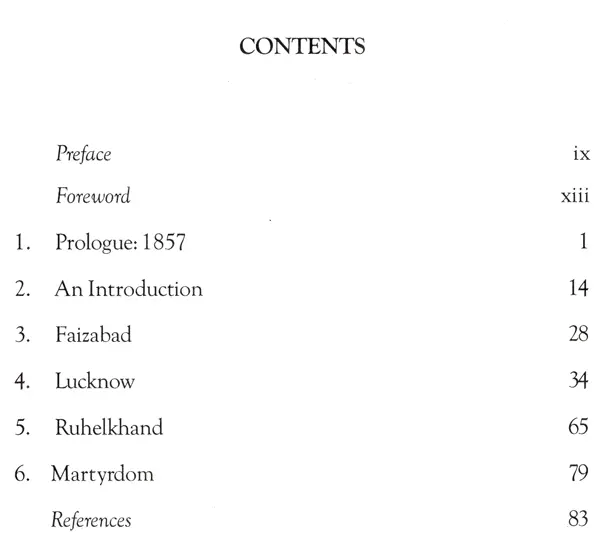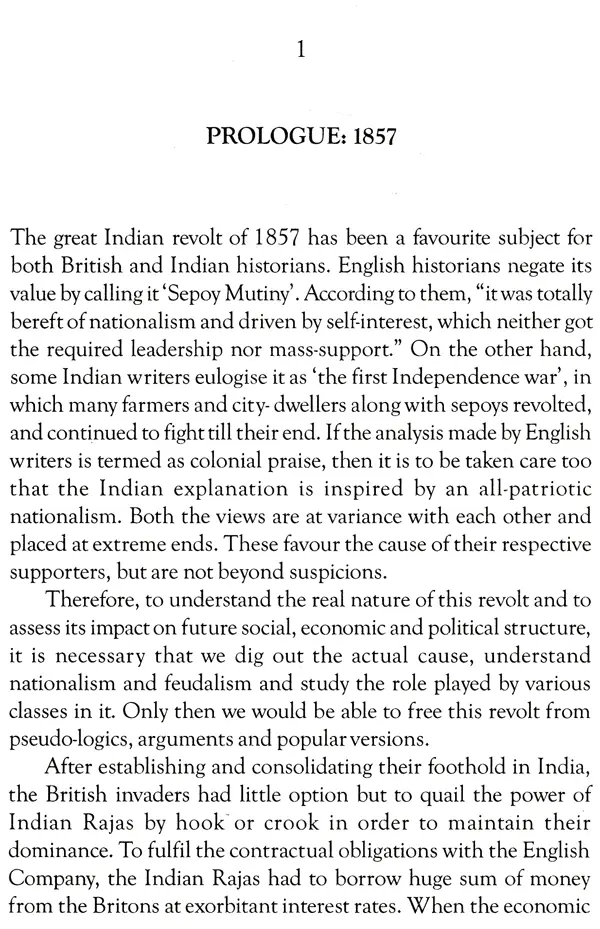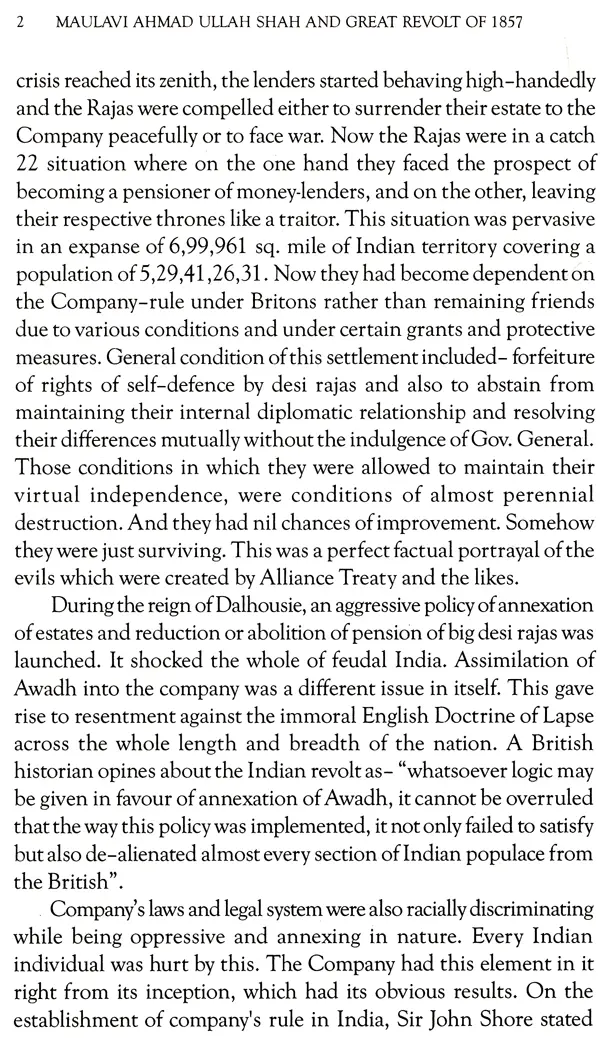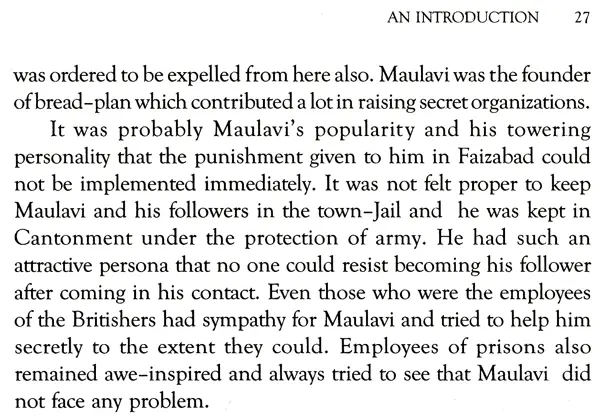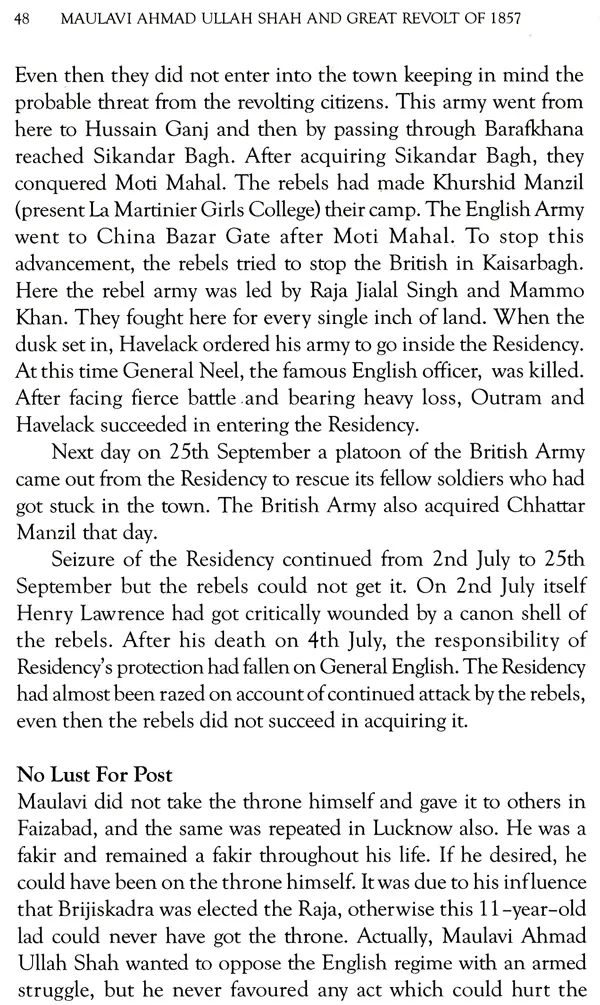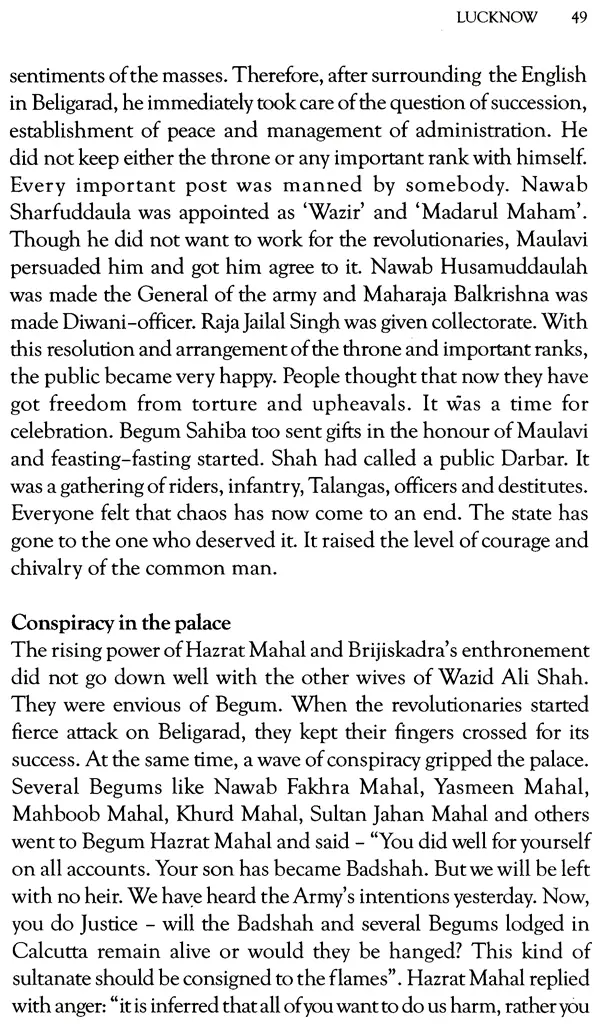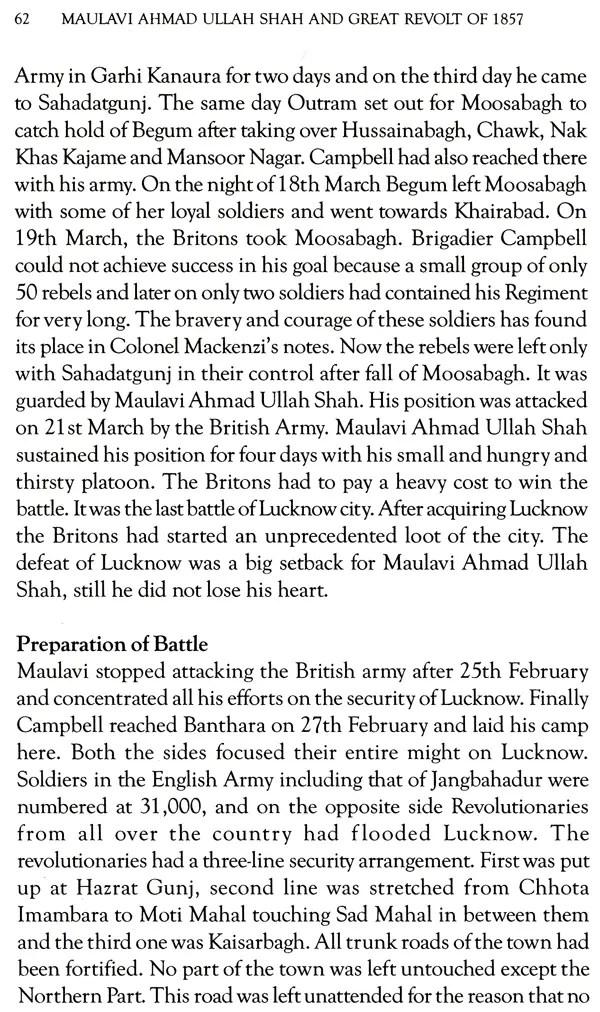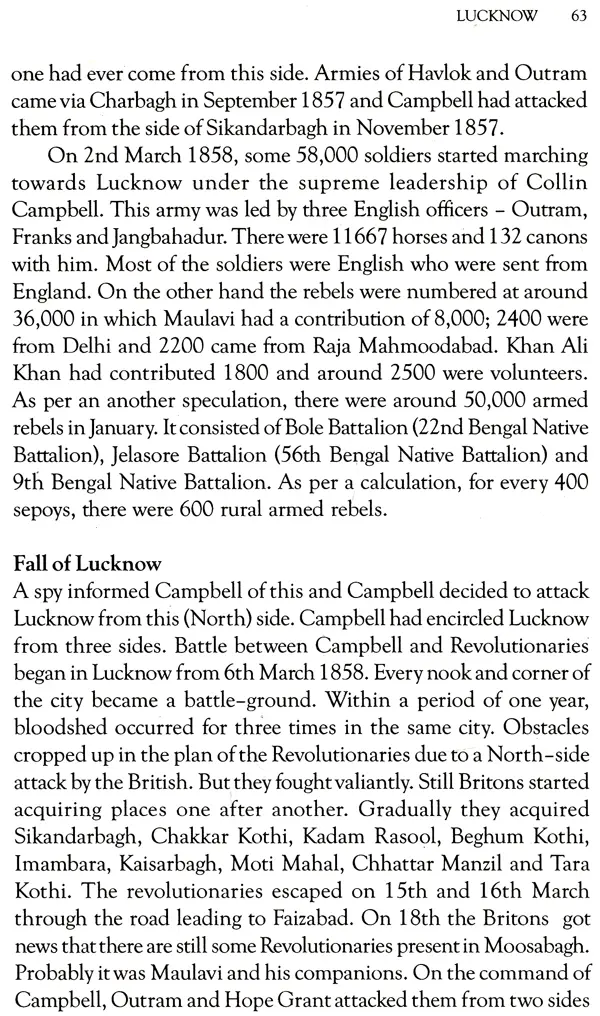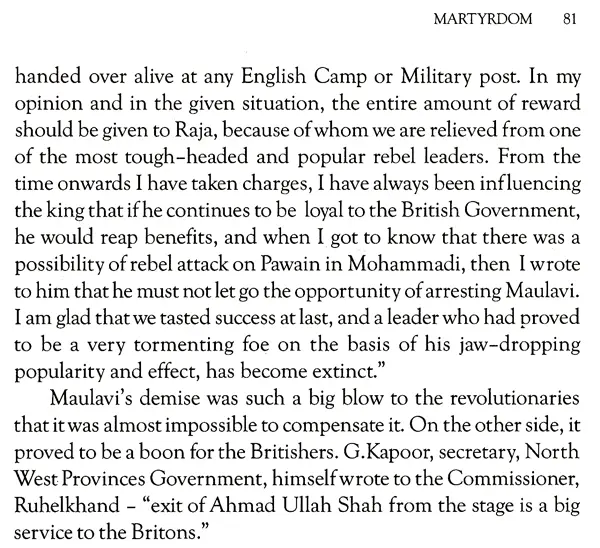
Maulavi Ahmad Ullah Shah And Great Revolt of 1857
Book Specification
| Item Code: | UAD266 |
| Author: | RASHMI KUMARI |
| Publisher: | National Book Trust, India |
| Language: | English |
| Edition: | 2016 |
| ISBN: | 9788123778488 |
| Pages: | 84 |
| Cover: | PAPERBACK |
| Other Details | 8.50 X 5.50 inch |
| Weight | 140 gm |
Book Description
There is no doubt that the doors for the establishment of British Raj in India opened after the Battle of Plassey. At the same time, the decks had also been cleared for the ignition of the Revolt of 1857 and other skirmishes. The Revolt of 1857 was the biggest explosion of public-dissatisfaction against the inhuman atrocities inflicted on Indians during this period. Intolerable atrocities, terrible economic exploitation, threat to the existence of Indian kings, maltreatment of Indian soldiers etc. had given rise to a pan national resentment against the British rule. The Revolt, which started from Meerut, spread to almost all big centres like - Kanpur, Lucknow, Benaras, Allahabad, Jagdishpur and Jhansi. The Indian populace rose in arms under the leadership of Nana Sahab, Tatya Tope, Rani Laxmi Bai, Maulavi Ahmad Ullah Shah, Ajimullah Khan, Kunwar Singh of Bihar etc. who played significant roles in this war. Thousands of patriots attained martyrdom for the independence of the country. No class or creed including Pandits, Mullas, Wahabis and Brahmins, Hindus and Muslims - remained untouched by the Revolt of 1857.
We have a long list of revolutionaries in history, who laid their lives to attain freedom from the shackles of slavery, beginning with the Revolt of 1857 till the attainment of Independence in 1947. They raised the torch of Indian freedom even higher by laying down their lives. In the light of their glorious sacrifices, our revolutionary movement had got an opportunity to determine new goals for the times to come.
The great Revolt of 1857 is, indeed, such a mysterious chapter of Indian history that even after 150 years of its occurrence, we today don't have the entire facts and figures relating to it. The magnanimity of this revolt could be gauged from the fact that this kind of a revolt had never occurred in the known history of India. Being a casteist society from its inception, it was never possible for its entire population to unite against any tormenting political entity which is a pre-requisite for this kind of a revolt. In every era of its known history, tormenting dynasties continued to get support from its congenital castiest society despite its unjust behaviors, and for this reason an atmosphere in which a public revolt could brew never arose. But in the 1857 Revolt, each religious, economic and social class of society had participated either directly or indirectly. So far as the question of participation of middle class is concerned, it was in its nascent stage and its involvement could hardly have created a flutter.
Our knowledge about this revolt is still limited, mainly to the writings of the British Military officers and historians. If we leave aside a few Indian historians, we are still required to depend on the British historians to reconstruct the history of this revolt even after a time-span of more than 60 years. Whereas, some records and documents related to this revolt are available with National Archives of India, New Delhi and all other regional archives of provinces, the records of day-to-day incidents of that time are preserved securely in the India Office Records, Library of London even today.
**Contents and Sample Pages**
